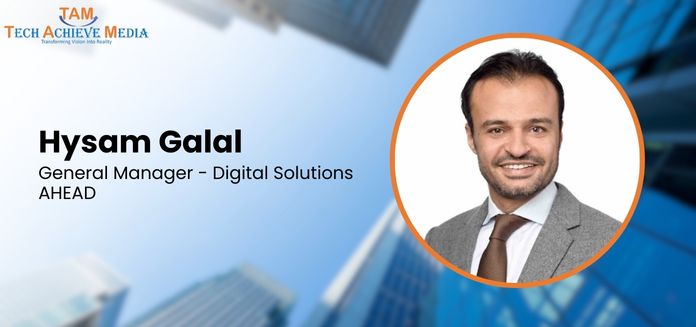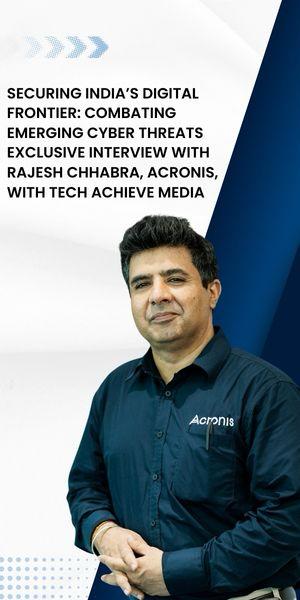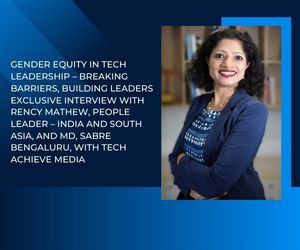In an era of rapid technological advancement, organizations are navigating the transformative potential of AI and the evolving landscape of cloud adoption. Hysam Galal, General Manager – Digital Solutions at AHEAD, shares his expert perspective on how AI is shaping digital transformation, the critical challenges enterprises face in modernizing their IT infrastructure, and the pivotal role of hybrid cloud strategies. In this insightful discussion, Galal outlines AHEAD’s approach to embedding security, tailoring modernization strategies, and preparing for an AI-first future. With a focus on delivering agility, resilience, and scalability, he sheds light on the trends set to redefine enterprise IT strategies over the next five years.
TAM: How has the advent of AI impacted digital transformation initiatives of organisations?
Hysam Galal: Let me give you an honest answer, we’re still trying to figure this out. It still feels a bit unclear. Everyone agrees that AI is going to be transformative in everything we do, but not many have fully grasped how it will manifest. That’s what we’re discussing with our clients: AI isn’t necessarily about offering an AI-specific solution. Instead, it’s more of an underlying enabler, it is a new way of working.
AI isn’t something you sell as a standalone product. It’s about integrating AI into existing processes to enhance them. For instance, if we’re doing cloud migration, we’re not pitching an “AI offering” to our clients. Instead, we’re saying, “We’ll migrate you faster,” and the speed comes from leveraging AI. AI helps by analyzing the current environment, making informed decisions, and optimizing the process.
Internally, we’re exploring how AI can reshape the way we operate. For example, in consulting, we’re looking at ways to improve staffing and resource management. AI helps us match the best skill sets to the right projects by analyzing and identifying top talents.
Externally, we’re working with clients to identify specific use cases. We’re conducting workshops to explore where AI can add value—especially through agent-based systems—and determining what these AI agents could do for their business. We’re still in the early stages, navigating this transformative shift. While everyone agrees that AI will have a massive impact, the journey of understanding and implementation is still unfolding.
TAM: What are the most pressing challenges enterprises face today in modernizing their IT infrastructure in the advent of AI, and what have you been witnessing?
Hysam Galal: Security is, without a doubt, always a challenge. As we move further into a virtual world, the attack surface grows significantly. This shift raises critical questions: How do we prepare? What measures can we take? We’ve observed a surge in demand for cyber recovery projects. Our advice to clients is straightforward: operate with the assumption that a breach is inevitable. The real question then becomes, what happens next? Preparing for that moment is where the focus should be. This mindset is a major challenge many of our clients face.
Another critical issue is modernization. Every client recognizes the need to modernize, but the meaning of modernization varies greatly depending on the organization. Helping clients define what modernization means for them is where we deliver the most value. For example, we work with them to create tailored roadmaps that guide their modernization journeys, addressing their unique needs and starting points.
In addition to modernization, many of our clients, often VPs of IT or CIOs, tell us they want to shift how their roles are perceived. They’re seeking to transition from being seen as a cost center to being recognized as a business enabler. Today, many IT departments are burdened by processes that slow down business scaling. For instance, something as simple as setting up a new server might require multiple steps and tickets, creating bottlenecks. Clients are asking us how they can build platforms that eliminate these hurdles and allow the business to scale more efficiently. This involves designing systems where new applications can be developed or expanded without unnecessary delays. Currently, much of the demand we’re seeing centers on crafting these modernization journeys, helping organizations redefine their IT strategies to align with business goals and enable seamless growth.
TAM: Platform Engineering and Security are crucial elements of AHEAD’s offerings. How do you ensure these two domains work in synergy to deliver both agility and resilience in a rapidly evolving threat landscape?
Hysam Galal: I believe the key to ensuring security is to avoid treating it as a separate or isolated function. Instead, security should be embedded into everything we do. In our organization, we integrate security professionals into every function, whether it’s DevSecOps, application development, platform engineering, or migration.
For instance, as we build applications or platforms, or as we migrate systems, we don’t wait until later to bring someone in to address security. Security considerations are a core part of the process from the start. For example, we have security experts working directly within our platform engineering teams rather than placing them in a standalone security department.
This approach is crucial because platform and application development are tightly intertwined with security. You can’t separate them without creating gaps. That’s why we prioritize hiring application developers and platform engineers who have a strong security background.
It’s not about having separate teams for security and engineering; we actively move away from siloed structures. By integrating security into every role and function, we ensure it’s a fundamental part of how we operate, and not just an afterthought.
TAM: How do you tailor strategies for organizations at different stages of maturity?
Hysam Galal: We have an advisory group primarily composed of solutions architects. Their role is to guide clients through their journeys, often using a framework similar to McKinsey’s horizon model: Horizon One, Horizon Two, and Horizon Three.
Horizon One typically involves migration. Most clients start here because they have applications or workloads in a data center that they want to move either to a more modern data center or, increasingly, to the public cloud. Often, this is driven by urgent needs, such as shutting down an existing data center within a strict timeline. For these clients, the focus is on rapid “lift-and-shift” migrations. Modernization discussions may come later, as the immediate priority is exiting their current infrastructure.
Once migration is complete, we begin to explore Horizon Two, which focuses on platform or application modernization. After moving applications, we often identify critical applications that aren’t scaling at the pace of the business. This presents opportunities for optimization, such as re-architecting and rebuilding applications to better align with business growth. In fact, some of our most significant deals have come from this phase starting with migration, gaining familiarity with the client’s environment, and then addressing scalability and modernization needs.
Horizon Three, which sometimes overlaps with Horizon Two, centers around data. Depending on the client, the sequence might shift, some prioritize data modernization before application modernization, and vice versa. These phases are flexible and tailored to each client’s unique needs.
Our advisory group, consisting of solutions architects and consultants, collaborates closely with clients to develop a roadmap that aligns with their goals. Whether a client prioritizes immediate migration or dives straight into modernization, we design a strategy that often spans two to three years of engagement. This roadmap ensures that every step supports their long-term objectives while addressing immediate challenges.
TAM: How far is the industry from an AI-first approach?
Hysam Galal: I think an AI-first approach might emerge around 2026 or 2027. That’s just my guess, though—it’s hard to predict. Perhaps by the end of 2027, we’ll see a shift where people begin to fully embrace an AI-first mindset.
TAM: What trends do you foresee shaping the future of cloud adoption and enterprise IT strategies over the next five years?
Hysam Galal: In general, I think it’s safe to say that most organizations will need to adopt some form of a hybrid approach. While moving to the cloud provides significant agility and flexibility, it’s clear that not everything will move entirely to the cloud. Nearly every organization has realized they’ll need to operate in a hybrid manner, and that’s pretty much a foregone conclusion at this point.
For data-intensive and modern applications, we see a stronger leaning toward the public cloud, given the abundance of tools and capabilities available there. However, focusing solely on migrations is a short-sighted strategy. Companies that specialize only in cloud migrations are on a path to obsolescence. In the next few years, if migration is all they offer, they’ll likely struggle to sustain their business.
The real focus now is on modernization. Migration should serve as an entry point, a stepping stone toward the broader goal of modernizing workloads and applications. This has been our philosophy for the past couple of years—migration alone isn’t sustainable. It’s about helping clients on their modernization journey, and that’s where we’ve seen the most demand.
Reflecting on recent trends, it’s evident that the pandemic forced many clients into an unplanned move to the cloud to enable remote work and maintain business continuity. Post-pandemic, while organizations started putting structured migration plans in place, economic concerns like inflation and budget constraints limited spending.
In the latter half of last year, we began seeing a shift. Organizations now have well-defined plans, and the financial resources to execute them are becoming more accessible. This has led to a second wave of cloud migrations, which we expect will continue. However, it’s important to note that this movement will never be 100% cloud-based. Hybrid operations are here to stay.









